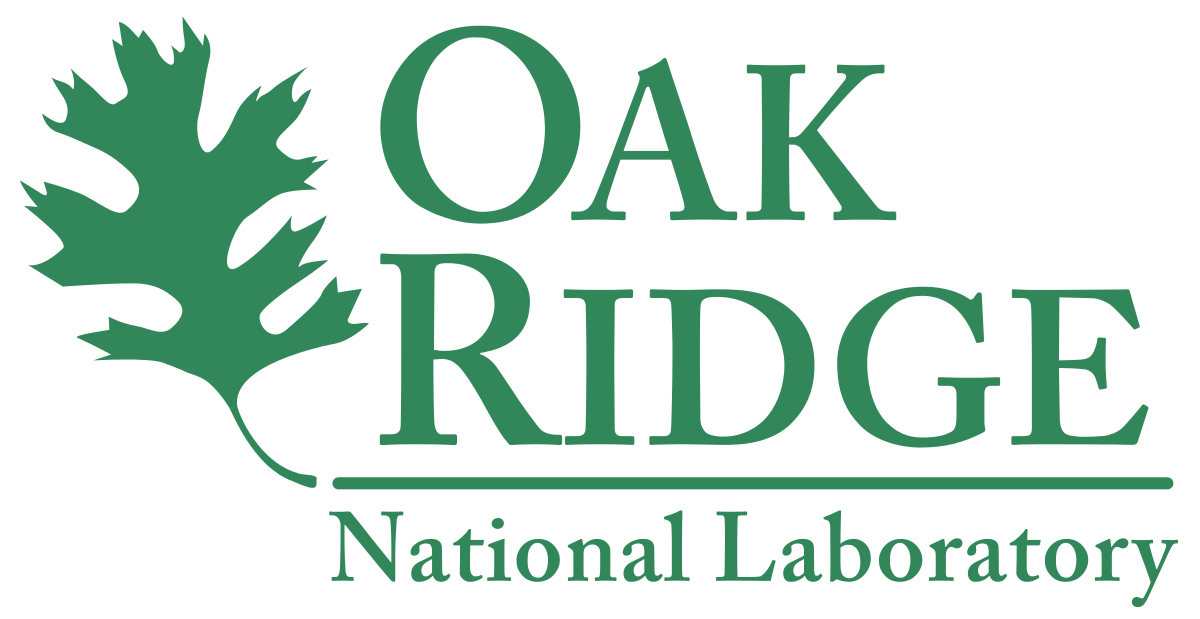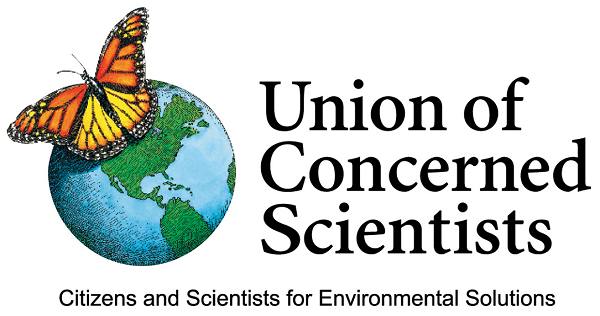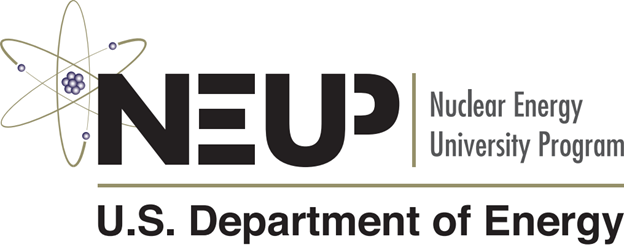Actinium-225 is a rare medical radioisotope. Treatments based on the use of actinium have been tested on leukemia, melanoma, glioma and prostate cancer and found to be effective. Most of the Ac-225 that has been produced has come from the U.S. Department of Energy’s Oak Ridge National Laboratory. Two other international sources have produced smaller amounts of Ac-225. These three sources can only produce enough Ac-225 to treat about one hundred patients. That is only sufficient to carry out very preliminary clinical trials.
The DoE Office of Sciences has an Isotope Program that is dedicated to developing new ways to produce useful radioisotopes. This program was started in 1946 as part of President Truman’s search for peaceful uses for nuclear energy. Since its creation, the program has been researching and manufacturing radioisotopes for research and industrial applications. The Isotope Program focuses on the production and distribution of radioisotopes that are in high demand and short supply that commercial firms are not interested in producing.
Each atom of each element has a specific number of protons in its nucleus. The number of neutrons in each nucleus can vary. This means that one element can have many different isotopes, based on the number of neutrons it’s nucleus. Some of these isotopes are stable but some are not. The unstable isotopes are constantly decaying and emitting subatomic particles as radiation. As some of these isotopes decay, they change the number of protons in a nucleus which changes the element into another element. The production and handling of radioactive isotopes or radioisotopes can only be done with the right expertise and equipment.
Currently, the Isotope program is working on finding new ways to create Ac-225. This program is referred to as Tri-Lab Research Effort to Provide Accelerator-Produced 225Ac for Radiotherapy project. It is being carried out at the Oak Ridge National Laboratory (ORNL), the Los Alamos National Laboratory (LANL), and the Brookhaven National Laboratory (BNL). They have succeeded in developing a new and promising method for producing Ac-225.
Ac-225 is an alpha emitter. This means that when it decays, it ejects two protons and two neutrons, or what is basically the nucleus of a helium atom. This particle is shortlived but as it travels, it emits intense energy. When combined with a molecule that seeks out cancer cells, this intense energy can break up the DNA of the cancer cell, preventing it from reproducing and may even kill it. Ac-225 is unique because it has a short half-life of ten days. It turns out that ten days is optimal for the treatment of some cancers.
In 2013, the federal Food and Drug Administration (FDA) approved the first drug based on alpha emitters. If the FDA approves drugs based on Ac-225 and bismuth-213 (Bi-213), a daughter isotope, the demand for Ac-225 could rise to fifty thousand millicuries. Current world production of Ac-225 amounts to one to two thousand millicuries.
Ac-225 is currently produced from a small piece of thorium-229 which naturally decays into Ac-225. The Ac-229 must be separated from the Th-229. The Isotope Program is now looking for ways to use high-energy accelerators to irradiate natural thorium to produce more Th-229 which will decay into Ac-225. BNL’s Linear Accelerator and LANL’s Neutron Science Center both host the type of accelerator needed for this approach.
In order to use the high energy accelerators to produce Ac-225, a hocky puck sized piece of thorium is placed in the accelerator. Protons that have been accelerated to about forty percent of the speed of light are then slammed into the thorium target. This produces hundred of different isotopes of different elements including Ac-225. The same process used before separates the Ac-225 from the resulting mixture of isotopes. The Tri-Labs group believes that they can produce about twenty times the Ac-225 that they are currently producing.
Blog
-

Oak Ridge National Laboratory Is Working On New Ways To Produce Actinium-225 For Medical Applications
-

Geiger Readings for Jun 22, 2018
Ambient office = 76 nanosieverts per hour
Ambient outside = 87 nanosieverts per hour
Soil exposed to rain water = 87 nanosieverts per hour
Asparagus from Central Market = 82 nanosieverts per hour
Tap water = 106 nanosieverts per hour
Filter water = 94 nanosieverts per hour
-

Pacific Northwest National Laboratory Researching Use Of Deep Learning To Identify Signals Related To Radioactive Decay
Radioactive decay occurs when the nucleus of an unstable atom ejects an elementary particle such as an electron or neutron and changes to a different isotope which may be a different element. It is a ubiquitous natural phenomenon. Nuclear power is based on the deliberate concentration of very heavy radioisotopes such as uranium which decay and generate heat to drive turbines and generate electricity.
The Pacific Northwest National Laboratory (PNNL) located in Richland, WA is one of the federal government laboratories that carries out nuclear research. It focuses on research and development related to waste management, environmental restoration, global environmental change, energy and national security.
The PNNL opened the Shallow Underground Laboratory in 2010. This laboratory is buried eighty-one feet deep under rock, earth and concrete. Thick shielding is used to protect against cosmic rays, external electronic devices and other sources of noise that would interfere with their work. They can analyze signals from anywhere on Earth that represent radioactive decay events. These events go on continuously everywhere, but they vary depending on the isotopes that are decaying. For example, researchers can monitor the level of argon-37 which may indicate a nuclear test. They also monitor the level of argon-13 which allows them to determine the age of groundwater.
The lab has collected data on millions of radioactive decay events since it opened in 2010. This was not an easy task given that they are listening for very rare events in a very noisy world where the signals they are looking for can be confused with signals of a different and often routine origin such as a person flipping a light switch or receiving a call on a cell phone.
Emily Mace is a PNNL scientist who presented a report on the work at PNNL to the Eleventh Methods and Applications of Radioanalytical Chemistry conference held in Hawaii this last April. She said, “Some pulse shapes are difficult to interpret. It can be challenging to differentiate between good and bad data.”
Recently Mace and her team contacted experts in what is called deep learning which is a new and very active subfield of artificial intelligence. Jesse Ward is one of dozens of experts in the field of deep learning whose work is being funded by the PNNL Deep Learning for Scientific Discovery Agile Investment. Mace sent Ward data they have collected on two million energy pulses detected in the Shallow Underground Laboratory since it opened.
Ward used a sample set of thirty two thousand pulses for training their neural network. He input a variety of features for each pulse and showed the network how to interpret the signals. This was followed by a second training phase in which he fed more signal samples into the network as it learned to differentiate useful signals that were informative from other signals that were unwanted noise. Finally, he tested the network on increasing complicated data sets that were difficult for human experts to interpret. The network was able to outperform human experts and correctly categorized the signals ninety nine point nine percent of the time.
Ward said, “Signals can be well behaved or they can be poorly behaved. For the network to learn about the good signals, it needs a decent amount of bad signals for comparison.”
Craig Aalseth is a nuclear physicist at PNNL. He said, “Deep learning is making it easier for us to filter out a small number of good events that are indicative of the activity of interest. It’s great to see deep-learning techniques actually doing a better job than our previous best detection techniques.”
There are many different applications for the techniques under development at PNNL. One area of research at PNNL is a search for signals that might be related to dark matter. Another possible application would be the automated detection of breast cancer and other anomalous tissues. -

Geiger Readings for Jun 21, 2018
Ambient office = 109 nanosieverts per hour
Ambient outside = 97 nanosieverts per hour
Soil exposed to rain water = 100 nanosieverts per hour
White mushroom from Central Market = 87 nanosieverts per hour
Tap water = 112 nanosieverts per hour
Filter water = 101 nanosieverts per hour
-

Nuclear Reactors 578 – The Union Of Concerned Scientists Is Working On Study Of Major Nuclear Events And The Role of Regu
Proponents of nuclear power in the U.S. claim that current regulations that apply to the nuclear industry are getting in the way of constructing, licensing and operating nuclear power plant. Opponents of nuclear power say that the nuclear industry is not sufficiently regulated to insure the safety of the public and the environment. People in the middle of the debate hope that it will be possible to find the right mix of regulations that will allow nuclear power to flourish while protecting the public and the environment.
The Nuclear Regulatory Commission undertook Project AIM in 2016 to find the best balance between regulation and promotion for the U.S. nuclear industry. Their goal was to spend the next five years improving the effectiveness, efficiency and agility of the NRC. Meanwhile, the nuclear industry has launched its Delivering on the Nuclear Promise campaign which is focused on increasing productivity and efficiency to allow nuclear power to better compete against other energy sources.
The Union of Concerned Scientists (UCS) is dedicated to developing and implementing innovative and practical solutions to some of the major problems facing the world. They are working on ways to combat global warming, developing sustainable ways to feed, power and transport the people of the world, fighting misinformation, advancing racial equality and reducing the risk of nuclear war.
The UCS has just announced a new major project concerning the role of regulation in nuclear plant safety. They are going to review major events in nuclear history and post a series of commentaries. They are seeking to understand exactly what “over” regulation and “under” regulation are in order to understand what would constitute “best” regulation. They intend to communicate their findings to the NRC to help the NRC reach the goals of the AIM Project. Their findings should also be useful for the promoters of nuclear power.
The UCS will review major nuclear events in order to decide if regulations were helpful or harmful in the way that the events were handled. They intend to create three categories for regulations associated with the events; too stringent, too lax, and just right. Then they will sort the major nuclear events they are studying in the different categories.
Examples of times when nuclear regulations were too lax would include the 1979 accident at Three Mile Island, the mid 1990s Millstone, Salem and Cooper problems, and the 2011 accident at Fukushima. Examples of times when nuclear regulations were too stringent include the August 1991 Site Area Emergency declared at Nine Mile Point following a transformer failure, the 1998 Towers Perrin report, and the semi-annual reports by the NRC’s Office of the Inspector General. Examples of times when the regulations were just right include March 1990 station blackout at Vogtle, the September 1997 discovery of and recovery from containment problems at DC Cook, and the flood protection deficiencies identified at Fort Calhoun in 2010 whose remedies were quite useful during the flood the plant experienced in June 2011.
Overall, there are about fifty nuclear events that will be categorized. They say that they will refrain from posting commentaries until all of these events have been studied and categorized. Then they hope that their work will yield meaningful insights into the proper role of regulation in ensuring plant safety. When they have dealt with all of the events, they will publish a final report to share their findings and recommendations. -

Geiger Readings for Jun 20, 2018
Ambient office = 109 nanosieverts per hour
Ambient outside = 93 nanosieverts per hour
Soil exposed to rain water = 100 nanosieverts per hour
Jalepeno pepper from Central Market = 97 nanosieverts per hour
Tap water = 74 nanosieverts per hour
Filter water = 66 nanosieverts per hour
-

Nuclear Reactors 577 – The U.S. DoE is Granting Sixty Four Million Dollars To Eighty Nine Projects In Twenty Nine States For Nuclear Research
I recently released a series of posts about the U.S. Department of Energy funding of new projects under its Advanced Research Projects Administration-Energy program. These ten projects are not the only grants from the DoE for energy research.
Today the DoE announced sixty-four million dollars of research grants for universities, national laboratories and private nuclear companies. The eighty-nine projects selected to receive grants are working on nuclear energy research, facility access, and technology and infrastructure. The grants are being issued by three DoE nuclear programs.
The Nuclear Energy University Program (NEUP) is the result of the DoE consolidating its university support programs under a single program in 2009. The NEUP funds nuclear energy research and equipment upgrades at U.S. colleges and universities. It provides students with educational support.
NEUP is distributing forty-seven million dollars to support sixty three U.S. university-led nuclear energy R&D projects in twenty nine states. The NEUP says that these projects will “maintain US leadership in nuclear research across the country by providing top science and engineering faculties and their students opportunities to develop innovative technologies and solutions for civil nuclear capabilities”. Another five million dollars is being granted to support eighteen university-led projects for research reactor and infrastructure improvements. NEUP says that. “These projects will provide important safety, performance and educational upgrades to a portion of the nation’s 25 university research reactors.”
The Nuclear Energy Enabling Technology (NEET) Program was established to develop “crosscutting” technologies that directly support and complement the DoE’s Office of Nuclear Energy. It will focus on advanced reactor and fuel cycle concepts that offer dramatically improve performance.
Five million dollars will be given to five R&D projects at national laboratories, universities and private nuclear companies. These projects will carry out research that will help address “crosscutting nuclear energy challenges that will help develop advanced sensors and instrumentation, advanced manufacturing methods, and materials for multiple nuclear reactor plant and fuel applications”.
The Nuclear Science User Facilities (NSUF) was created to permit research opportunities to nuclear researchers. Users are allowed free access “to world-class nuclear research facilities, technical expertise from expertise from experienced scientists and engineers, as well as assistance with experiment design, assembly, safety analysis and examination.”
The NSUF program will grant six million six hundred thousand dollars to two university-led projects and one nuclear industry-led project to study nuclear fuel and material applications. These projects will focus on “research, facility access costs, and expertise in: experimental neutron and ion irradiation testing, post-irradiation examination facilities, synchrotron beamline capabilities, and technical assistance for design and analysis of experiments.”
Ed McGinnis is the principal assistant secretary for nuclear energy at the DoE. He said, “Because nuclear energy is such a vital part of our nation’s energy portfolio, these investments are necessary to ensuring that future generations of Americans will continue to benefit from safe, clean, reliable and resilient nuclear energy. Our commitment to providing researchers with access to the fundamental infrastructure and capabilities needed to develop advanced nuclear technologies is critical.”
